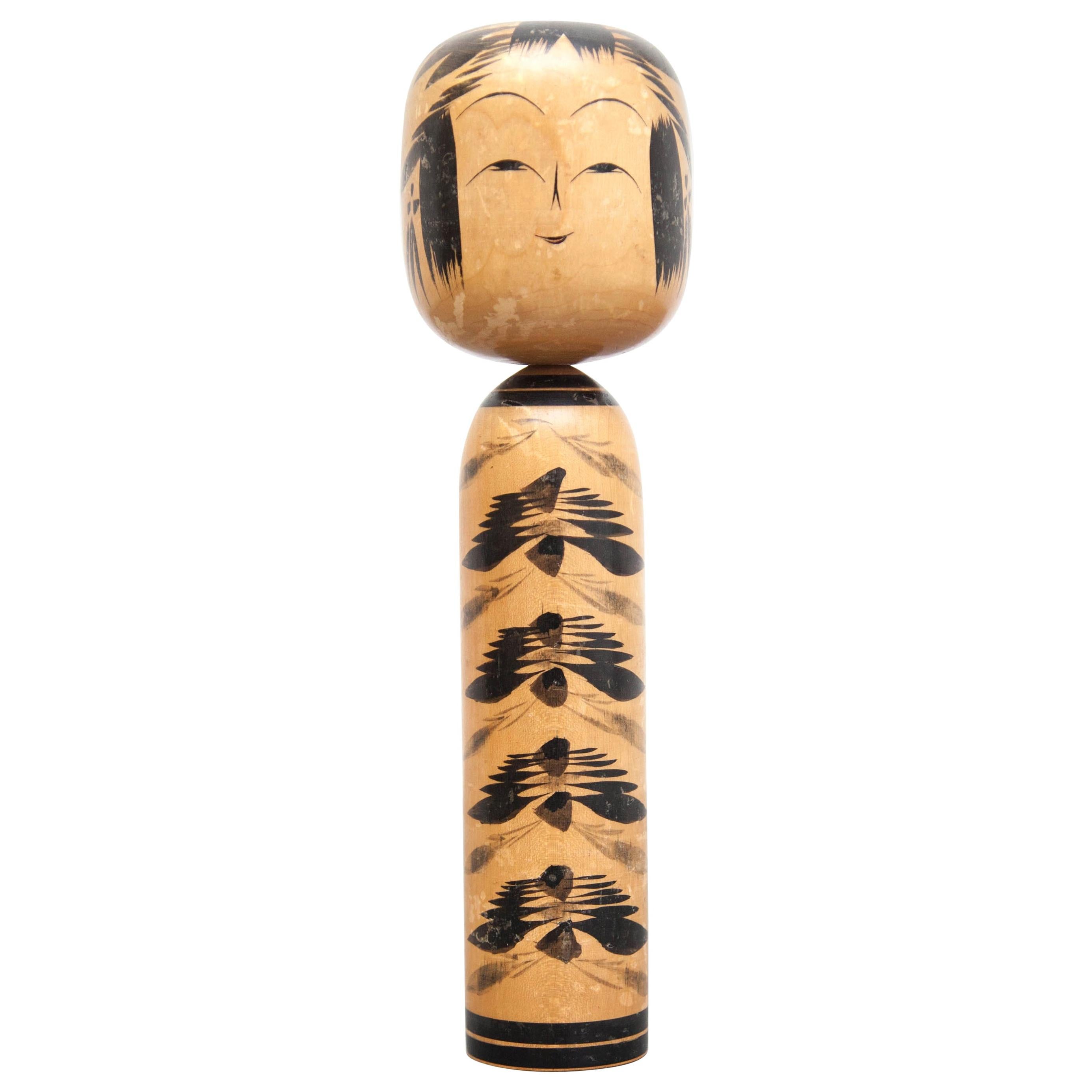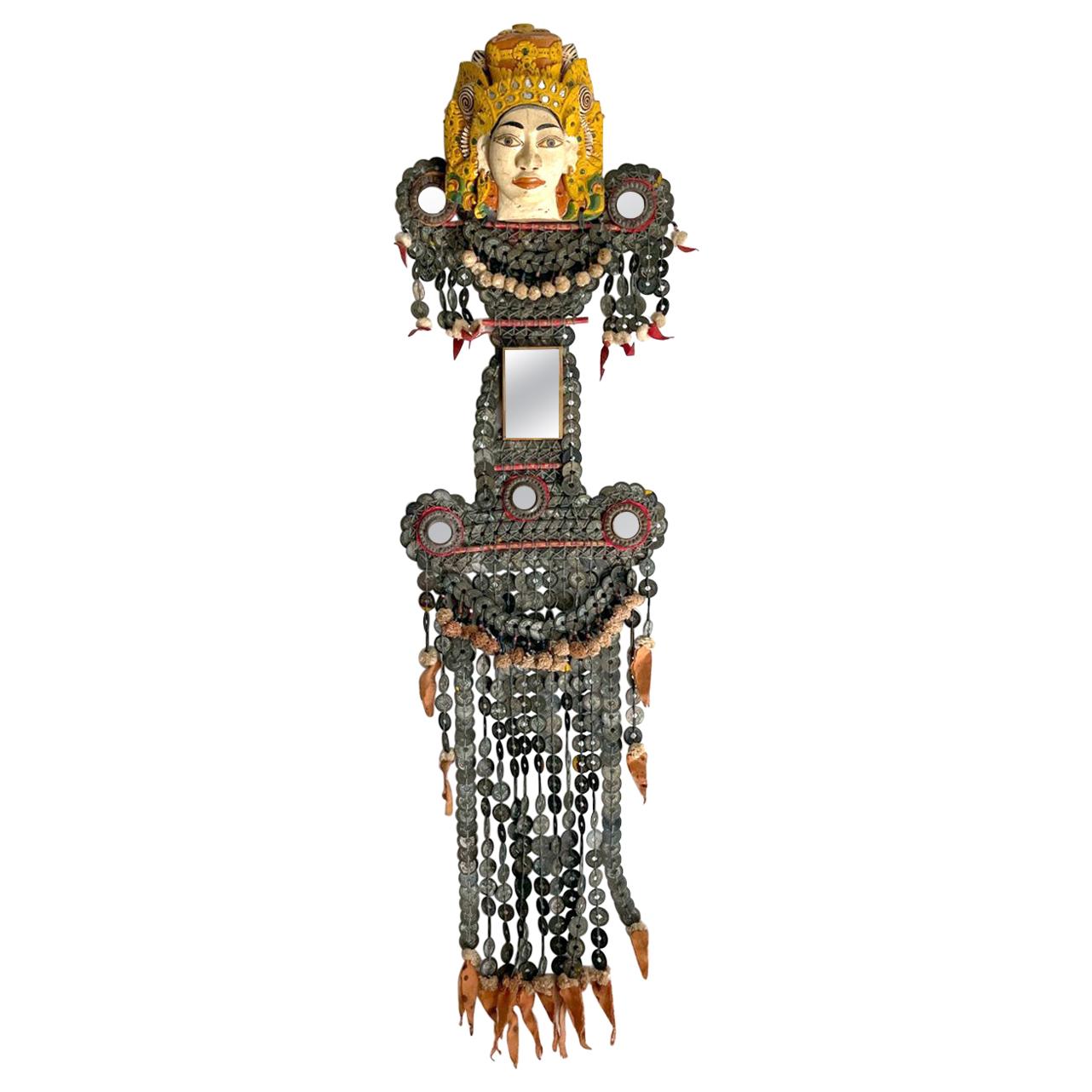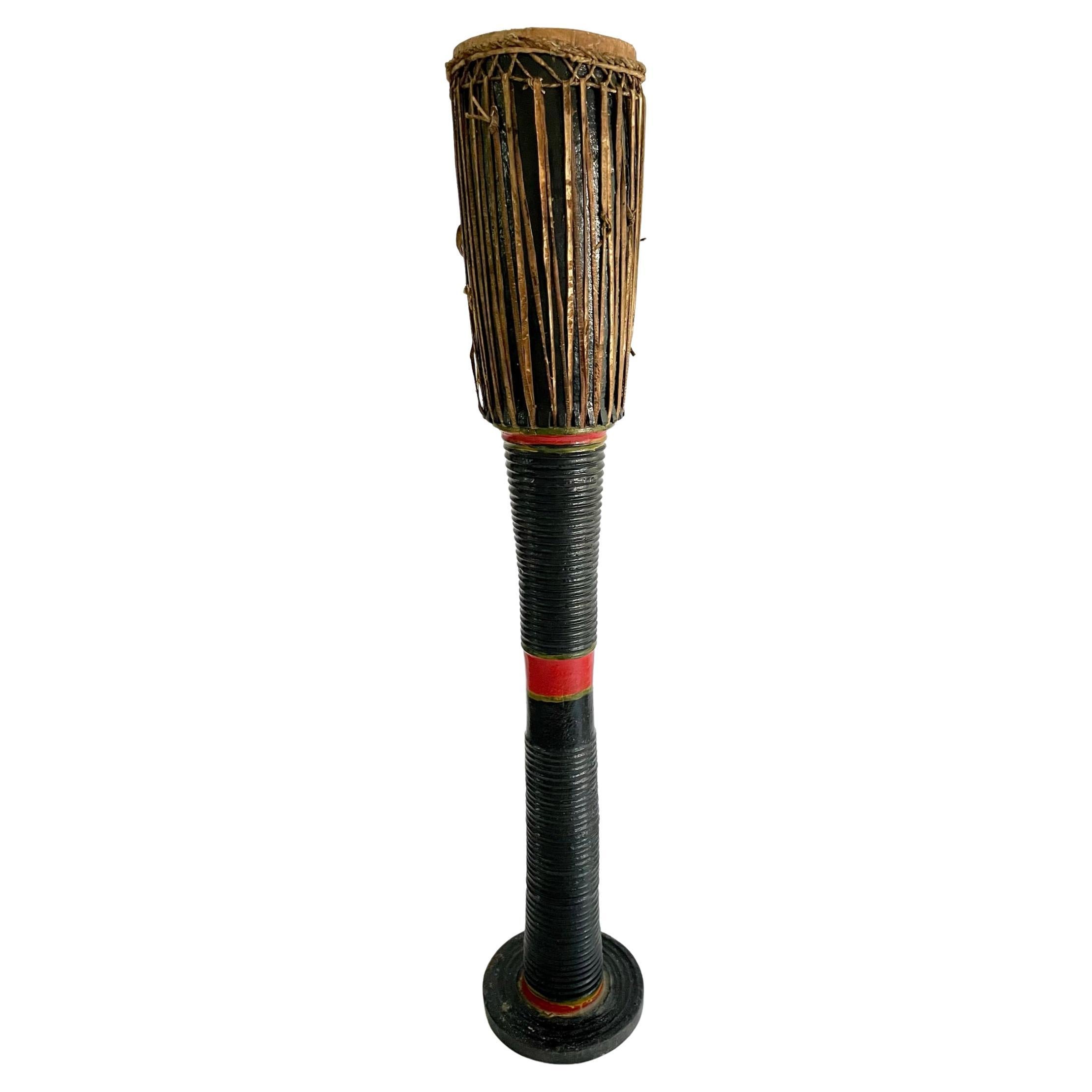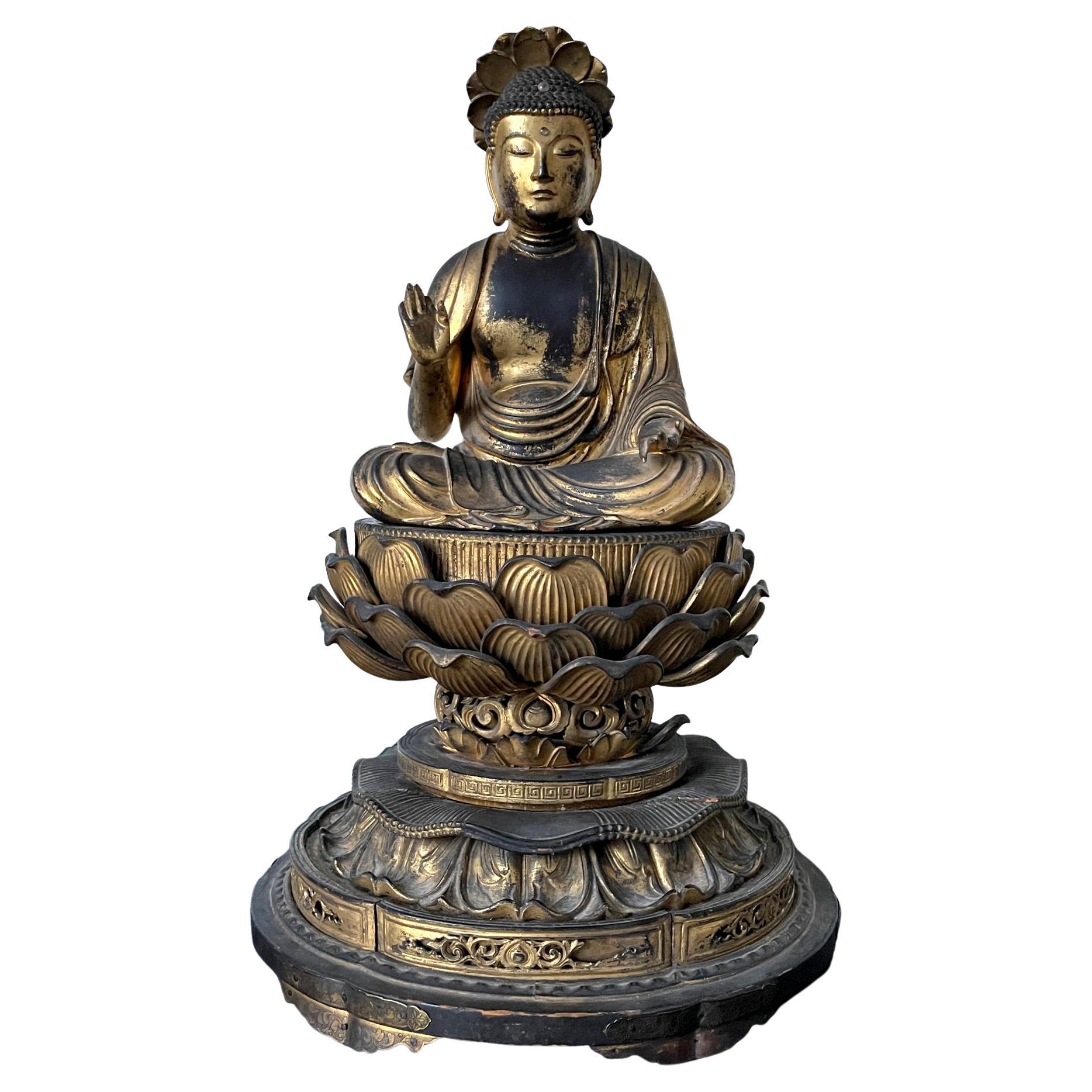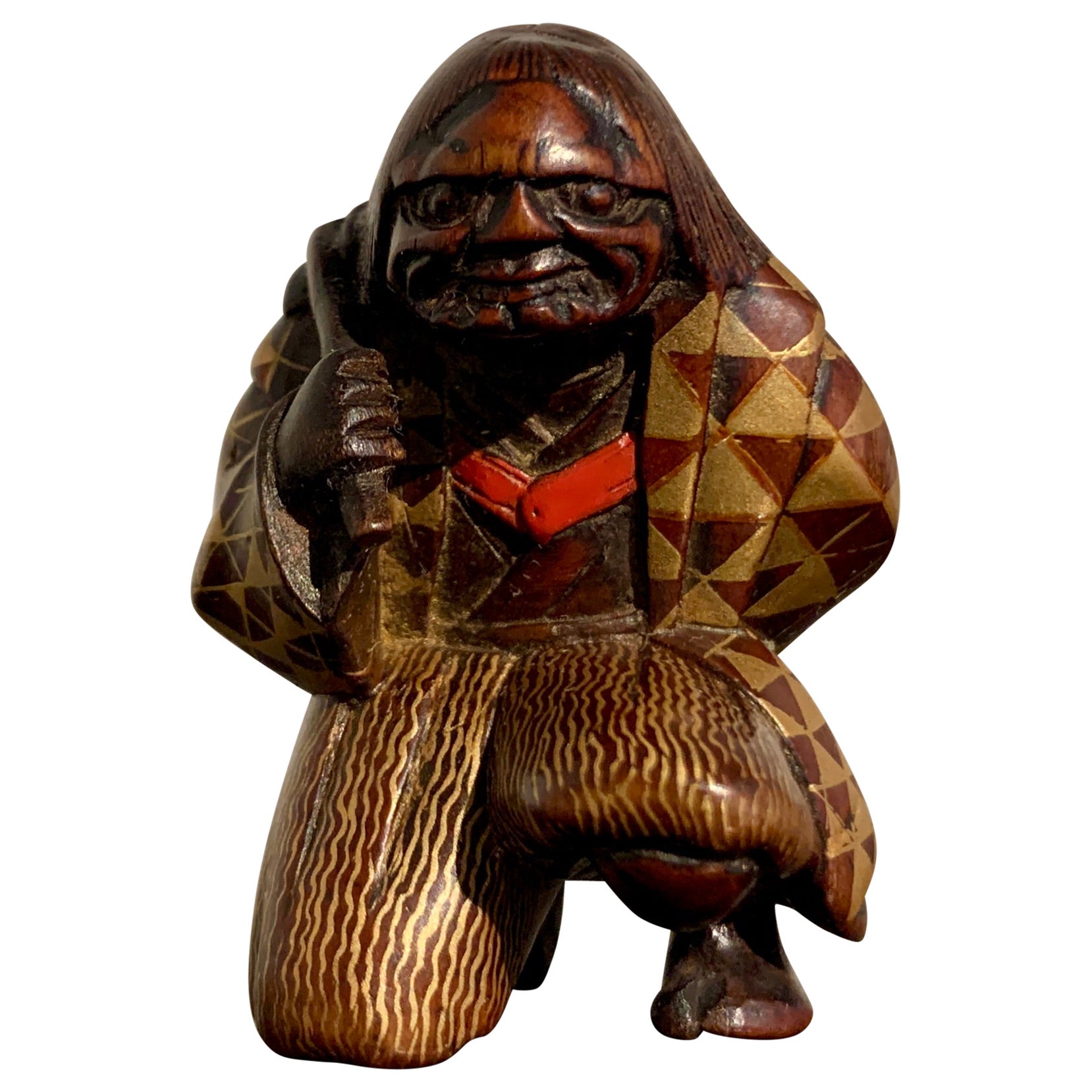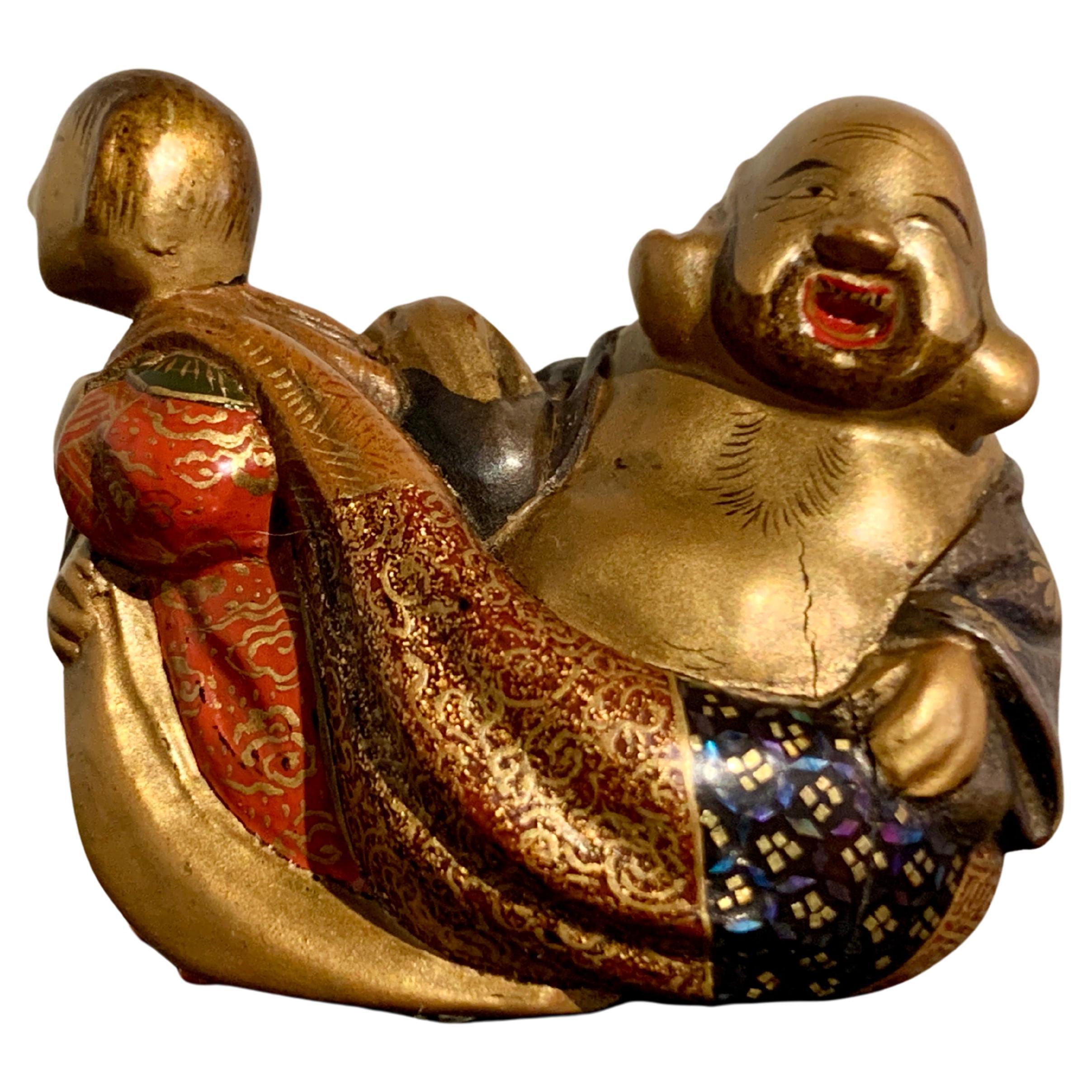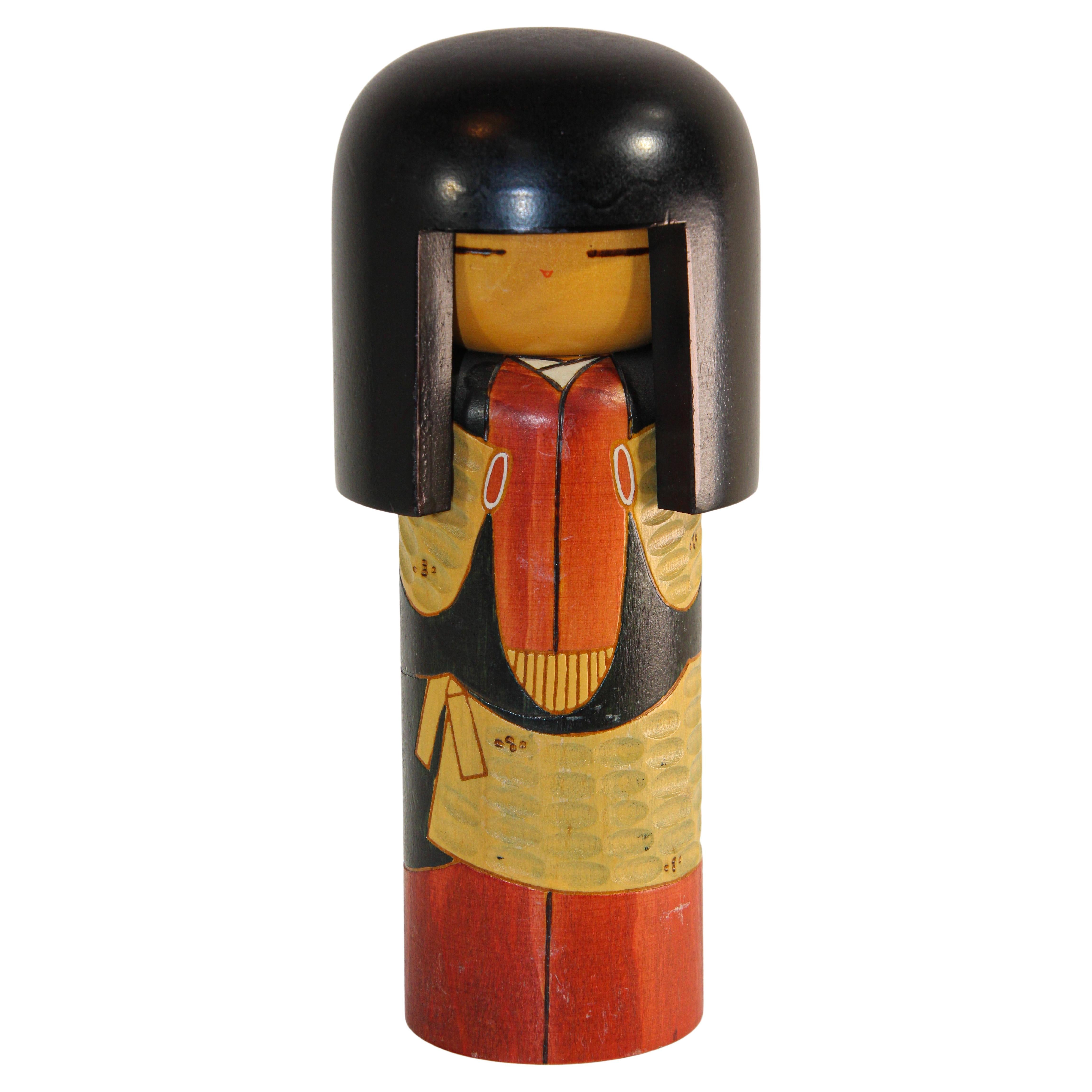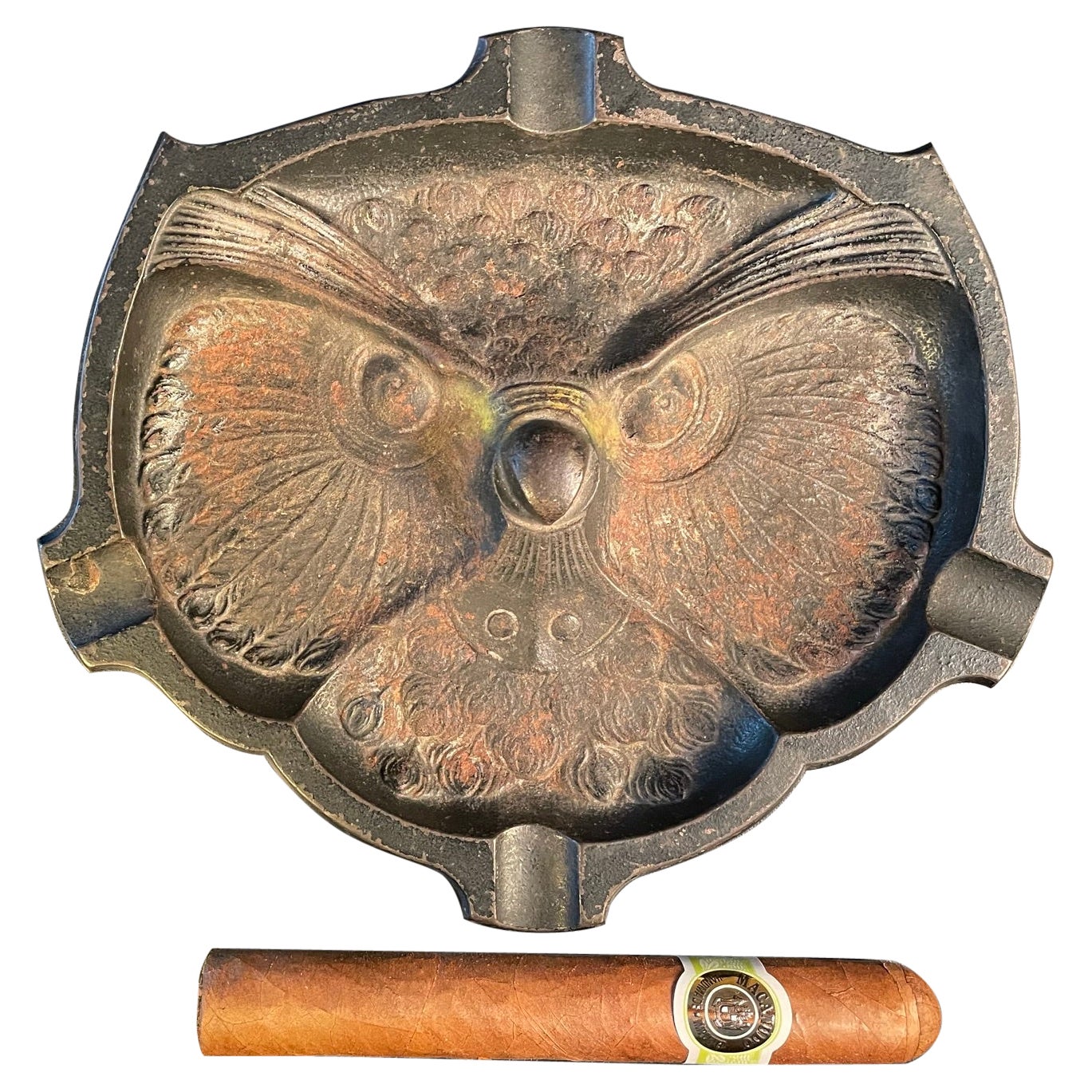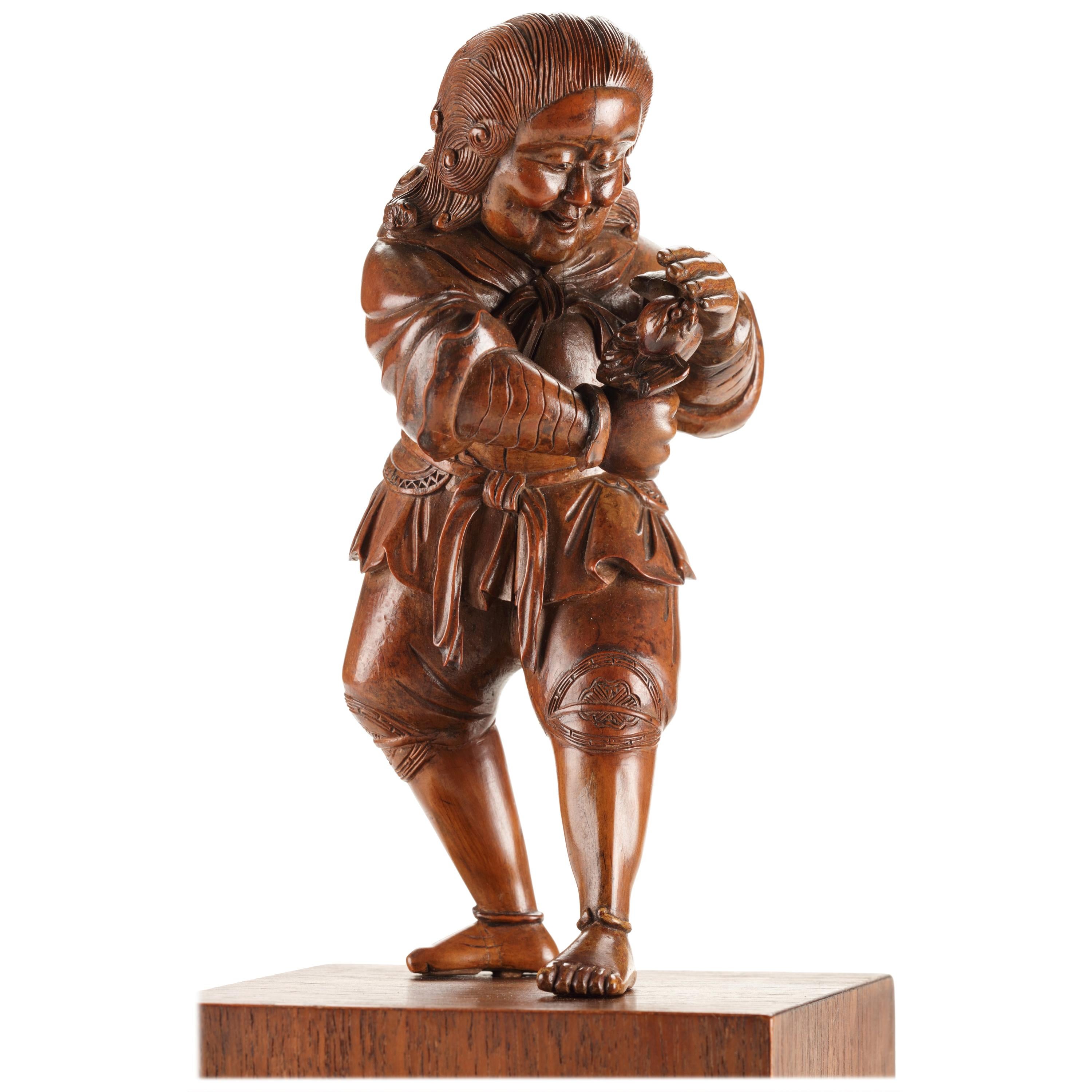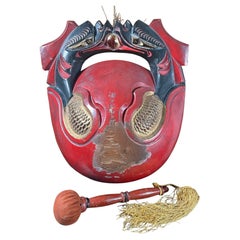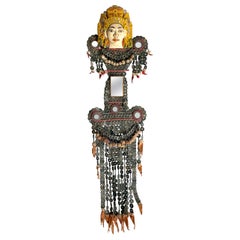
Japanese Huge Antique Shinto Suzu Temple Bell
View Similar Items
Want more images or videos?
Request additional images or videos from the seller
1 of 13
Japanese Huge Antique Shinto Suzu Temple Bell
About the Item
- Dimensions:Height: 13 in (33.02 cm)Diameter: 10.5 in (26.67 cm)
- Style:Meiji (Of the Period)
- Materials and Techniques:Copper,Cast
- Place of Origin:
- Period:
- Date of Manufacture:1895
- Condition:Wear consistent with age and use.
- Seller Location:South Burlington, VT
- Reference Number:1stDibs: LU1289212592511
About the Seller
5.0
Platinum Seller
These expertly vetted sellers are 1stDibs' most experienced sellers and are rated highest by our customers.
Established in 1990
1stDibs seller since 2015
2,209 sales on 1stDibs
Typical response time: 1 hour
More From This SellerView All
- Japanese Huge 18 Inch Antique Temple Shinto Prayer Bell, Historical ItemLocated in South Burlington, VTHistorical Bell- Immediately Useable First ever to be offered A genuine temple used de-accession 96 inch prayer bell with original wooden handled rope from a shrine in Nakamura Ward, Nagoya, Japan An extraordinary opportunity to acquire, collect, use and display the largest scale 18” temple bell of this kind we have ever seen in private hands- including its original wood and hemp rope pull- a Japanese authentic hand cast copper Shinto Suzu bell. The auspicious temple shrine from which this bell comes, was founded in 1156 to honor Ojintenno, who was the 15th emperor of Japan. It was commissioned in part by Minamoto no Tametomo, who was a famous Samurai, who is known as possibly being the first samurai to commit Seppuku. Its big 18" high and 12" diameter bell including a massive hand carved wooden pull handle measuring 17 inches in length shows patina from great age, dates to the late 19th century, and was formerly rung outside a Nagoya Temple great hall where it was enjoyed by members of Japan's local Shinto communities. This bell was authentically rung at this temple shrine. We will include the original 96 inch rope pull with massive 17 inch long hand carved wooden handle. In total, this is an extraordinary copper bell which includes its rare original wood and hemp rope pull. Important: Please view the actual insitu photograph of this amazing relic before it was deaccessioned. This huge old bell dates to the late 19th century period, displays an impressive patina from age, and sounds impressive. It's lower half portion has been purposely hand-hammered by design to improve its sound- this is not damage. The Suzu Shinto bell...Category
Antique 1890s Japanese Meiji Sculptures and Carvings
MaterialsCopper
- Big Antique Japanese Zen Temple Chanting Bell Genuine Hand Carved MokuygoLocated in South Burlington, VTJapanese antique temple find from the Meiji period, 19th century A large hand carved hand lacquered, and hand gilded wooden chanting bell mok...Category
Antique 19th Century Japanese Meiji Sculptures and Carvings
MaterialsWood
- Japanese Rare Large Antique Bronze Temple "Futuku" Bell Complete Original ChimeLocated in South Burlington, VTRare large Japanese bronze temple "Futaku" bell with original and complete hanging bronze cloud clapper , from Kyoto Temple. One of only two we have seen This bell is a rare treasu...Category
Early 20th Century Japanese Meiji Sculptures and Carvings
MaterialsBronze
- Japanese Fine Antique Bronze Temple DragonLocated in South Burlington, VTFrom our recent Japanese acquisitions A lovely example of a Japanese antique bronze dragon water spout miraculously saved from a temple vessel and dating to the late Meiji period, 1...Category
Early 20th Century Japanese Meiji Sculptures and Carvings
MaterialsBronze
- Japanese Big Antique Bronze Temple Bell with Resonating Sound, Signed 21 InchesLocated in South Burlington, VTFor your special garden setting or indoor display space. Big Hand Cast Bronze Bell Bold pleasing, and resonating sound. 21 Inches Tall. Dated Taisho 15= 1926 , December 12 Signed for patron donors at Imari Ikishima Donors include: Fukui Sano and Fukui shie, Tomiyama kazuki,and Nichimao . Handsome original old green patina- just the way we like to find them. Signed by patron donors in two areas. Beautiful deep resonating ring tones await the new owner of this big one-of-a-kind vintage bronze bell from old Japan. Its beautiful natural patina makes it an attractive and desirable work of art. This distinctive dragon headed bell called ryuzu and remarkable protrusions called chi chi or nyu are crafted by generations old skilled Japanese specialists to improve sound resonance and are unique to Japan's ancient traditions. This antique hand cast bronze temple bell dates to the Taisho period, early 20th century. A scarce survivor, this rugged bell was gently used. Please note its impressive cast dragon headed top ryuzu, thick walls and original dark patina. Dimensions: 21 inches tall and 11 inches diameter. It has been used and possesses an original green aged patina appropriate to its age. Its deep resonating sound is guaranteed to please you. About Bonsho Bells "Voice of Buddha" The earliest bells date to around 600 AD, although the general design is of much earlier Chinese origin and shares some of the features seen in ancient Chinese bells. Their penetrating and pervasive tone carries over considerable distances. The sound of the bell is thought to have supernatural properties. It is believed, for example, that it can be heard in the underworld. In Japanese ceremonies, hanging bells are used for signaling during the prayer and for calling Buddhists to worship. In China, similar bells were employed in ensembles, where they represented the yin, or "receptive" principle, and were sounded after the beat of a large drum (yang, or "creative" element). The Japanese bonsho...Category
Early 20th Century Japanese Taisho Sculptures and Carvings
MaterialsBronze
- Antique Huge Bronze Bell Resonates Pleasing SoundLocated in South Burlington, VTOnly One. For Your Garden setting or Indoors Beautiful deep resonating ring tones await the new owner of this one-of-a-kind master bronze work. This superb antique hand cast bronz...Category
Early 20th Century Indonesian Sculptures and Carvings
MaterialsBronze
You May Also Like
- Rare Large Antique Balinese Temple Hanging Lamak, IndonesiaLocated in Atlanta, GAAn extraordinary "Kepeng Lamak" from Bali, Indonesia, circa early 20th century. Lamak is a general term for temple hangings, mostly made of disposable materials like palm leaves for temporary offerings. A small number, such as this piece, were made by wealthy and aristocratic families for permanent display. The lamaks are traditionally displayed in temples or residents for a strong spiritual reason in Bali that is known as "Artja". They could function as receptacles, or a vessels of for the habitation of the deities when they descent to the earth on propitious occasions. In a goddess form with a carved wood head adorned with painted face and mirrored crown who likely represents Dewi Danu, the water goddess, this lamak was constructed with a bamboo frame, cotton pompoms, fabric fragments...Category
Early 20th Century Indonesian Other Sculptures and Carvings
MaterialsCopper
- Early 20th Century Thai Temple DrumLocated in Atlanta, GAThis elegantly carved temple drum wase use in Buddhist Temples. It’s carved from teak and lacquered black with red and green stripped details. The top and straps are made of leather. These gigantic goblet...Category
Early 20th Century Thai Sculptures and Carvings
MaterialsLeather, Teak, Lacquer
- Japanese Antique Gilt Wood Amitabha Buddha on Loctus Throne StatueLocated in Atlanta, GAA Japanese carved wood Amitabha (Amida) Buddha statue with residual gold leafed surface circa 19th century (late Edo period). The buddha is seated in the padmasana position on an elevated double lotus throne, under a small lotus halo canopy. His right hand is held in abhaya mudra which means fearlessness in Sanskrit. The mudra symbolizes protection, peace, and fearless. His left hand gently resting on his thigh. Dressed in a flowing robe with open chest, the statue showcases a classic iconography found prominently in Japanese Buddhism art during Edo to Meiji period, characterized by the double lotus throne and a particularly serene meditative facial expression, highlighted by inset gemstones...Category
Antique 19th Century Japanese Edo Sculptures and Carvings
MaterialsGold Leaf
- Carved Boxwood and Lacquer Netsuke of a Noh Dancer, Meiji Period, JapanLocated in Austin, TXA fine lacquer decorated carved boxwood netsuke of a Noh dancer in a Hannya role, unsigned, Meiji period, late 19th century, Japan. The boxwood netsuke finely carved as a kneeling Noh dancer dressed in striking geometric patterned robes. The actor holds an opened war fan behind their back in one hand, a Shinto wand slung over the shoulder in the other. The war fan, tessen, decorated in red lacquer with a golden rising sun at the center. Tessen were sturdy fans used by samurai as protective devices, and sometimes as weapons. The wand, called an onusa, is a traditional Shinto ritual implement comprised of folded paper streamers, shide, attached to a wooden wand, often used in purification rituals. Here, the shide are crafted from silver maki-e, with the handle of the natural boxwood. The actor wears a fierce and unearthly hannya mask...Category
Antique 1890s Japanese Meiji Sculptures and Carvings
MaterialsBoxwood, Lacquer
- Boxwood and Lacquer Netsuke of Hotei by Shunsho, Meiji period, circa 1900, JapanLocated in Austin, TXA charming and finely decorated carved and lacquered boxwood netsuke of Hotei by Shunsho (probably Shunsho XI, Masaoki), Meiji period, circa 1900, Japan. This delightful and colorful netsuke features the beloved figure Hotei, one of the Seven Lucky Gods. The god of fortune and happiness is seated upon his treasure bag, and being dragged by a smiling child. Carved from boxwood and decorated in bright lacquers of gold, silver, red, black and green. Hotei's chest and ample stomach mostly exposed, his skin covered in gold lacquer. Large elephantine ears frame his bearded face. His red-lipped mouth open in an uproarious laugh. Hotei's treasure bag formed as a patchwork of various brocades in gold, red, and black lacquer. The black lacquer further decorated in the lac burgaute...Category
Antique Early 1900s Japanese Meiji Sculptures and Carvings
MaterialsBoxwood, Lacquer
- Vintage Traditional Japanese Kokeshi Wood DollLocated in North Hollywood, CAKokeshi or Kokashi doll handmade by Japanese artisans from wood. The dolls have a simple trunk as a body and an enlarged head. One characteristic of Kokeshi dolls is their lack of arms and legs. signed underneath as follow. Kokashi Doll Kegon Waterfall Japan 1987. Kokeshi (???, ???), are simple wooden Japanese dolls with no arms or legs that have been crafted for more than 150 years as a toy for...Category
Late 20th Century Japanese Japonisme Sculptures and Carvings
MaterialsWood
